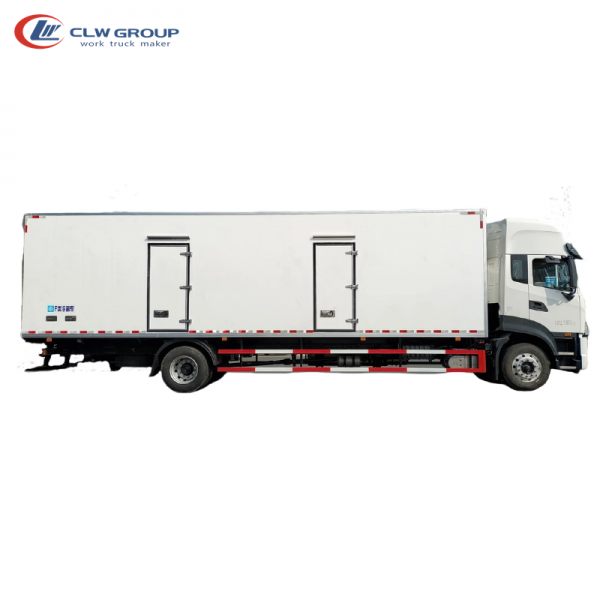Enhancing Safety and Efficiency in Hazardous Material Handling with Truck-Mounted Cranes

Introduction
Hazardous material handling poses significant risks to both workers and the environment. Proper handling and transportation of these materials are crucial to prevent accidents and minimize potential harm. In industries such as construction, manufacturing, and transportation, the need for efficient and safe material handling solutions is paramount. One such solution that has gained popularity in recent years is the truck-mounted crane. This article explores the benefits and applications of truck-mounted cranes in hazardous material handling, highlighting their role in enhancing safety and efficiency.
Overview of Hazardous Material Handling
Hazardous materials, also known as hazmat, are substances that pose a risk to health, safety, and the environment. These materials can be in the form of liquids, gases, solids, or a combination of these. Handling hazardous materials requires strict adherence to safety regulations and protocols to prevent accidents, spills, and exposure to harmful substances.
In industries where hazardous materials are used or produced, specialized equipment and trained personnel are essential for safe handling and transportation. Traditional methods of material handling often involve manual labor, which can be time-consuming, labor-intensive, and risky. As a result, companies are increasingly turning to innovative solutions such as truck-mounted cranes to streamline their operations and improve safety standards.
Benefits of Truck-Mounted Cranes in Hazardous Material Handling
Truck-mounted cranes offer a range of benefits that make them well-suited for handling hazardous materials. what is a tanker truck of the key advantages include:
1. Mobility and Versatility: Truck-mounted cranes are mounted on a mobile truck chassis, allowing them to be easily transported to different job sites. This mobility and versatility make them ideal for handling hazardous materials in various locations, including construction sites, industrial facilities, and emergency response scenarios.

2. Reach and Lifting Capacity: Truck-mounted cranes are equipped with telescopic booms that provide impressive reach and lifting capacity. This allows them to lift heavy and bulky loads, such as drums, containers, and equipment, with precision and control. The ability to reach high and confined spaces makes truck-mounted cranes valuable assets in hazardous material handling operations.
3. Efficiency and Productivity: Truck-mounted cranes are designed for efficiency and productivity, enabling operators to complete tasks quickly and safely. By reducing manual labor and streamlining material handling processes, truck-mounted cranes help companies improve their operational efficiency and meet project deadlines.
4. Safety Features: Safety is a top priority in hazardous material handling, and truck-mounted cranes are equipped with various safety features to protect operators and workers. These features may include overload protection systems, anti-two block devices, outrigger stability controls, and emergency stop buttons. By prioritizing safety, truck-mounted cranes help minimize the risk of accidents and injuries in the workplace.
Applications of Truck-Mounted Cranes in Hazardous Material Handling
Truck-mounted cranes find a wide range of applications in hazardous material handling across different industries. Some common applications include:
1. Chemical Industry: In the chemical industry, truck-mounted cranes are used to handle drums, tanks, and containers of hazardous chemicals. These cranes are essential for loading and unloading chemical products safely and efficiently, reducing the risk of spills and accidents.
2. Oil and Gas Industry: The oil and gas industry relies on truck-mounted cranes for various material handling tasks, such as lifting pipes, valves, and equipment during drilling and production operations. Truck-mounted cranes play a crucial role in maintaining safety standards and operational efficiency in this high-risk industry.
3. Construction Sites: Construction sites often deal with hazardous materials such as asbestos, lead-based paint, and flammable substances. Truck-mounted cranes are used to transport and position materials on construction sites, helping workers avoid manual handling risks and complete tasks with precision.
4. Emergency Response: During emergency situations such as chemical spills, truck-mounted cranes are deployed to assist in containment and cleanup efforts. These cranes can be equipped with specialized attachments and tools to handle hazardous materials safely and effectively in crisis scenarios.
Case Studies and Success Stories
To illustrate the effectiveness of truck-mounted cranes in hazardous material handling, let's explore a few case studies and success stories from industries that have implemented these cranes in their operations:
Case Study 1: Chemical Plant Safety Enhancement
A chemical plant in the Midwest implemented truck-mounted cranes in its material handling processes to improve safety and efficiency. By using truck-mounted cranes to lift and transport chemical drums and containers, the plant reduced the risk of manual handling injuries and spills. The cranes' reach and lifting capacity allowed workers to handle heavy loads with minimal effort, leading to increased productivity and operational efficiency.
Case Study 2: Oil Rig Maintenance
An offshore oil rig operator invested in truck-mounted cranes to streamline maintenance activities on its platforms. The cranes were used to lift and position equipment, tools, and materials during routine inspections and repairs. By utilizing truck-mounted cranes, the operator improved safety standards and minimized downtime, resulting in cost savings and enhanced operational performance.
Success Story: Hazardous Waste Cleanup
A hazardous waste management company utilized truck-mounted cranes to assist in the cleanup of a chemical spill at a manufacturing facility. The cranes were instrumental in lifting and moving contaminated materials safely and efficiently, allowing the cleanup crew to contain the spill and mitigate environmental impact. The successful cleanup operation showcased the importance of having reliable and versatile equipment like truck-mounted cranes in hazardous material handling.
Conclusion
Truck-mounted cranes play a crucial role in enhancing safety and efficiency in hazardous material handling across various industries. With their mobility, reach, lifting capacity, and safety features, these cranes offer a reliable solution for handling hazardous materials in a controlled and effective manner. By investing in truck-mounted cranes, companies can improve their operational processes, protect their workers, and minimize the environmental impact of hazardous material handling activities. As technology continues to advance, truck-mounted cranes are expected to become even more sophisticated and tailored to meet the evolving needs of the hazardous material handling industry.
